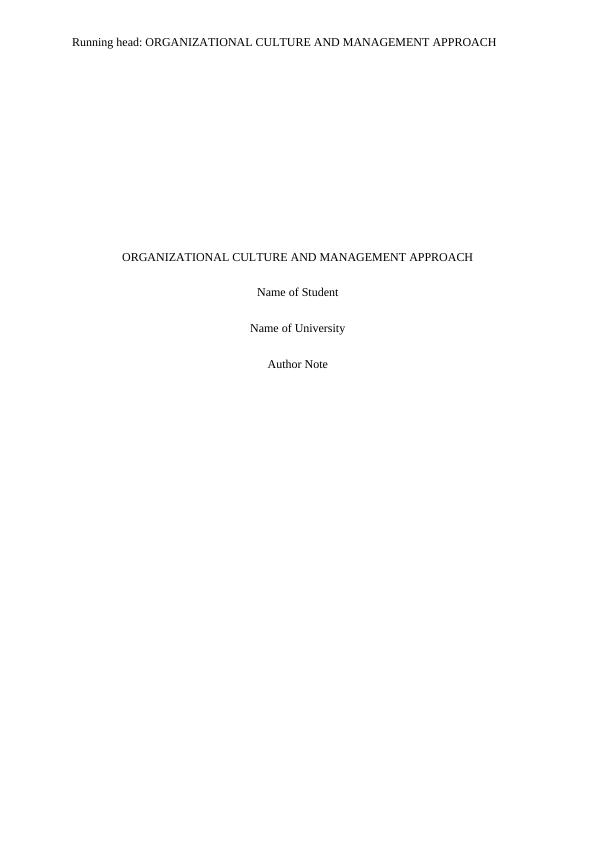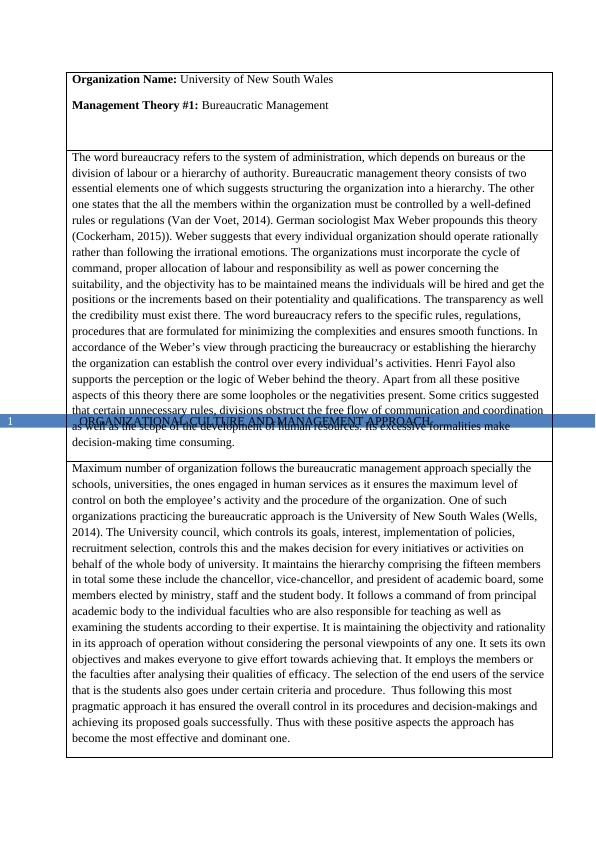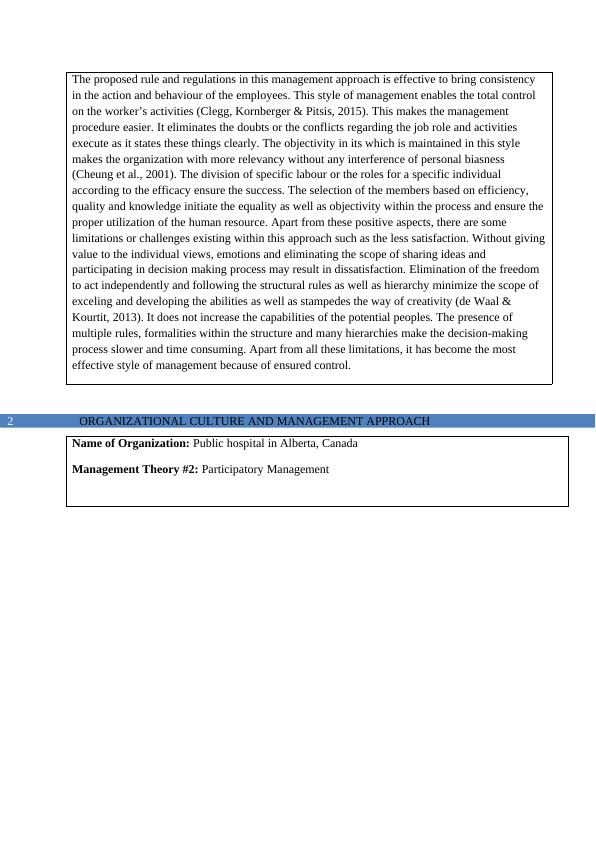Organizational Culture and Management Approach
This assignment requires the student to describe and analyze the benefits and challenges of two management approaches in human service organizations, making connections to theoretical literature and providing evidence/examples from their chosen organization.
7 Pages2218 Words170 Views
Added on 2022-11-07
About This Document
This article discusses two management approaches, bureaucratic management and participatory management, and their implementation in two different organizations. It also highlights the positive and negative aspects of these approaches.
Organizational Culture and Management Approach
This assignment requires the student to describe and analyze the benefits and challenges of two management approaches in human service organizations, making connections to theoretical literature and providing evidence/examples from their chosen organization.
Added on 2022-11-07
ShareRelated Documents
End of preview
Want to access all the pages? Upload your documents or become a member.
Managing People and Organizations
|8
|1316
|82
Post Bureaucracy: Understanding and Analyzing Functionality of Bureaucratic Organizations
|21
|1241
|114
Organizational Theory and Management Ideologies
|7
|1721
|345
Essay on Globalisation Practices of Managing Culture
|10
|2519
|44
Business Communication: Theories, Barriers, and Strategies for Overcoming Them
|8
|1888
|431
The Nature of Leadership And Bureaucracy- GMGM 5063
|17
|4348
|72



